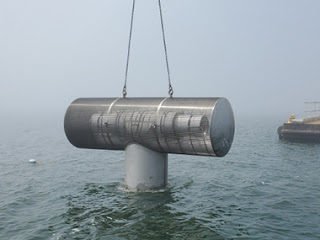Water Pump Intake Screen(Wedge Wire Intake Screen/Passive Intake Screen) - Effectively Removes Debris to Prevent Pump Damage
In this article, YUBO has compiled some guidelines about the water pump intake screens, please click to view.
What is a Water Pump Intake Screen? A water pump intake screen is a device that is installed at the intake of a water pump to prevent debris, such as leaves, sticks, and other large particles, from entering the pump and causing damage. The screen is typically made of a fine mesh material that allows water to flow through while blocking larger objects. It is important to regularly clean and maintain the intake screen to ensure proper water flow and prevent clogging.
Why do we use a water pump intake screen? We use a water pump intake screen to prevent debris, such as leaves, sticks, and other large particles, from entering the pump and causing damage. If debris enters the pump, it can clog the impeller, damage the pump’s bearings, and reduce the pump’s efficiency. This can lead to costly repairs and downtime. The intake screen helps to protect the pump and prolong its lifespan by filtering out large particles before they can enter the pump. It also helps to ensure that the water being pumped is clean and free of contaminants.
Where is the water pump intake screen used? Designed for open source surface water applications such as lakes, rivers, ponds, reservoirs, canals and irrigation ditches.
How to clean the water pump intake screen? Cleaning the water pump intake screen is an important maintenance task that should be performed regularly to ensure proper water flow and prevent clogging. Here are the steps to clean the water pump intake screen:
Turn off the water pump and disconnect the power supply to the pump.
Locate the intake screen, which is usually located at the bottom of the pump or at the end of the suction hose.
Remove the intake screen from the pump or suction hose.
Rinse the intake screen with clean water to remove any debris or dirt.
If the screen is heavily clogged, use a soft brush or toothbrush to gently scrub away any debris.
Inspect the screen for any damage or tears. If the screen is damaged, it should be replaced.
Reinstall the intake screen back into the pump or suction hose.
Turn on the water pump and check for proper water flow.
Repeat this cleaning process regularly, depending on the amount of debris in the water source.
By following these steps, you can ensure that your water pump intake screen is clean and functioning properly, which will help to prolong the life of your pump and ensure efficient water flow.
How to choose the right water pump intake screen? Choosing the right water pump intake screen is important to ensure that it effectively filters out debris and protects the pump from damage. Here are some factors to consider when choosing the right water pump intake screen:
Pump size: The intake screen should be compatible with the size of the pump. A screen that is too small can restrict water flow, while a screen that is too large can allow debris to pass through.
Mesh size: The mesh size of the screen should be appropriate for the size of the debris in the water source. A smaller mesh size will filter out smaller debris, but may also restrict water flow.
Material: The intake screen should be made of a durable material that can withstand the conditions of the water source. For example, if the water source contains saltwater, the screen should be made of a material that is resistant to corrosion.
Installation: The intake screen should be easy to install and remove for cleaning and maintenance.
Water source: The type of water source, such as a lake, river, or well, can also affect the choice of intake screen. For example, if the water source contains a lot of leaves and twigs, a screen with a larger mesh size may be more appropriate.
By considering these factors, you can choose the right water pump intake screen that will effectively filter out debris and protect your pump from damage.
To learn more about YUBO water pump intake screens and discuss your unique project requirements, contact us today.
By the way, YUBO is a professional wedge wire screen filter manufacturer in China. We provide various types of v-wire filters including water pump intake screens.


评论
发表评论